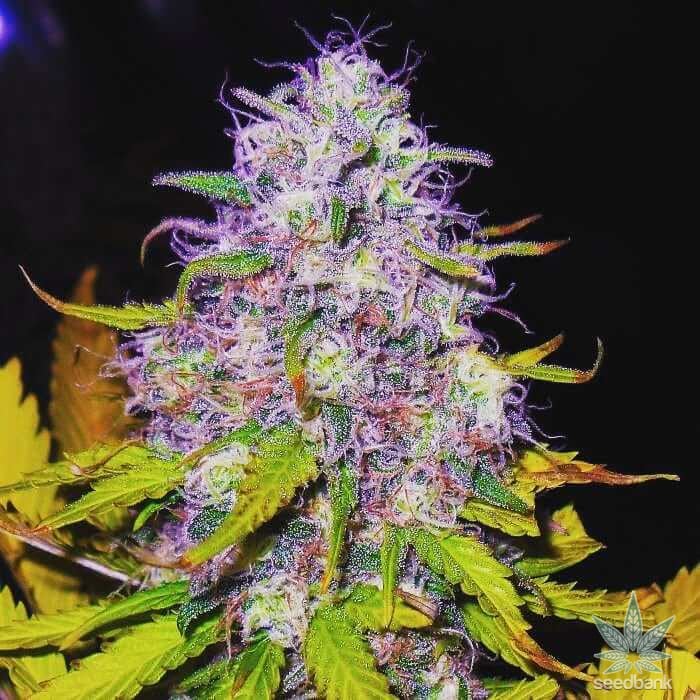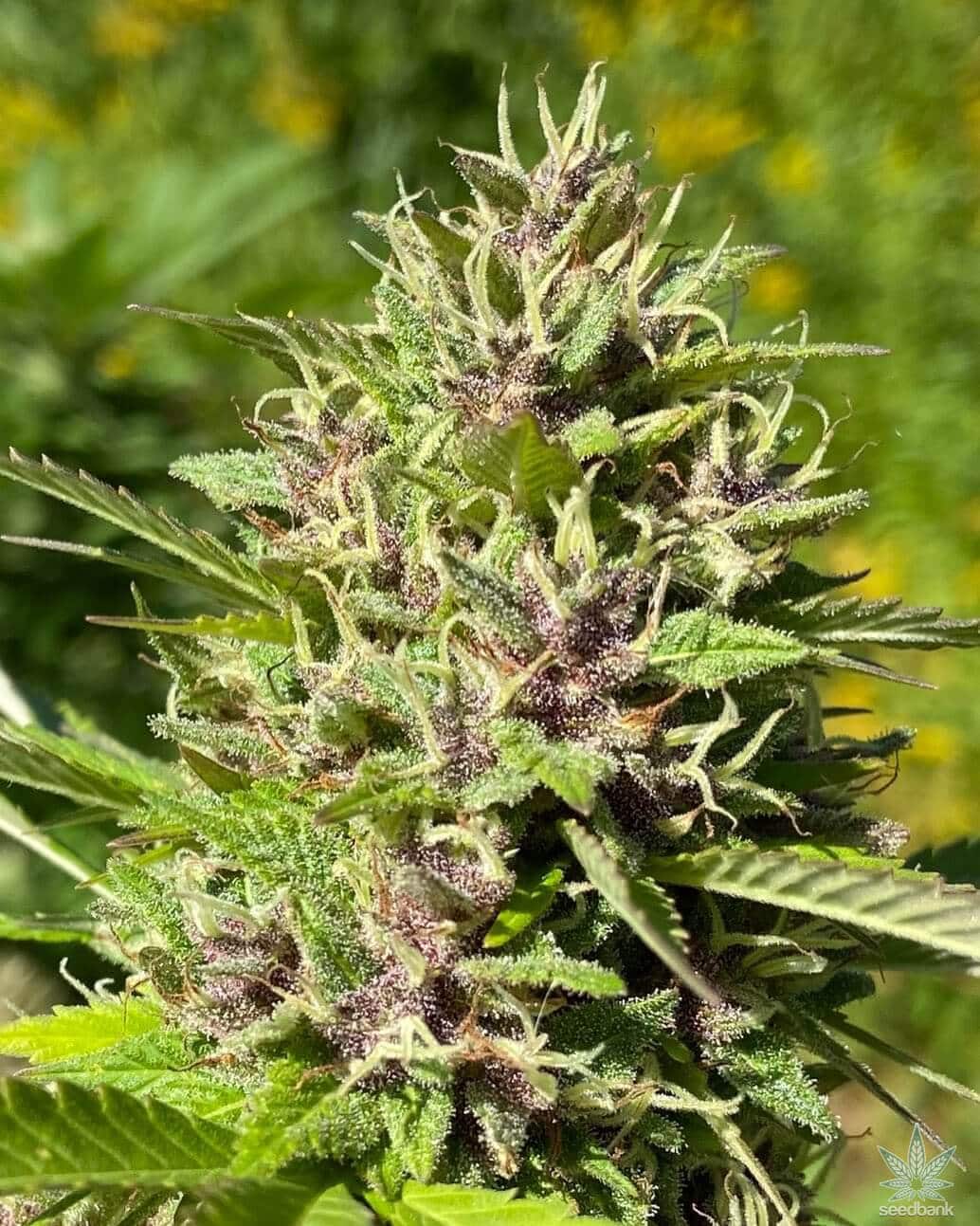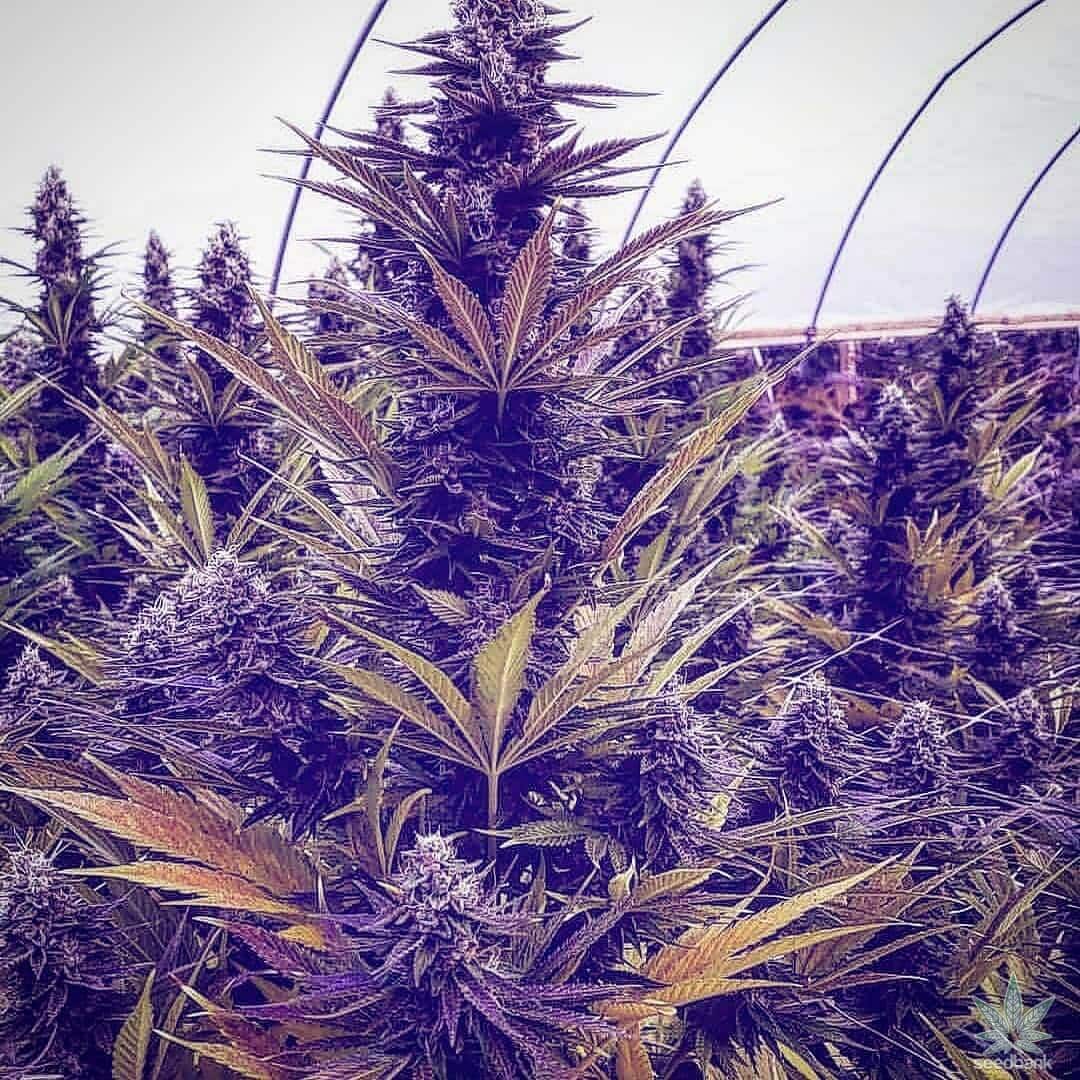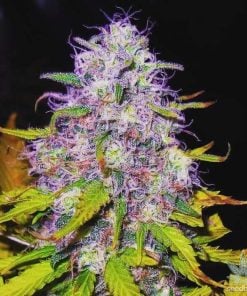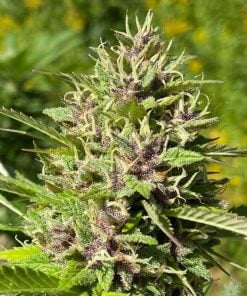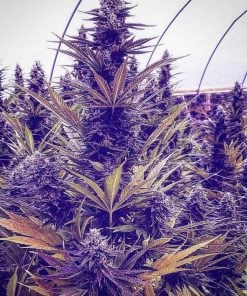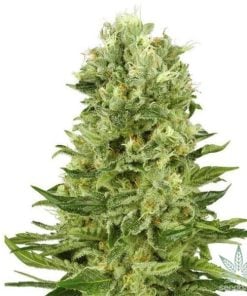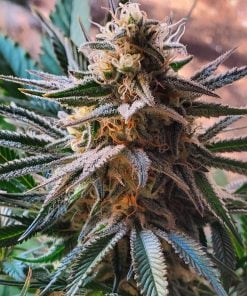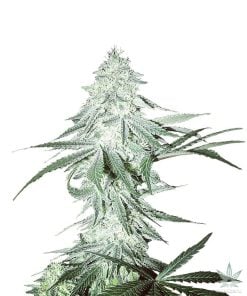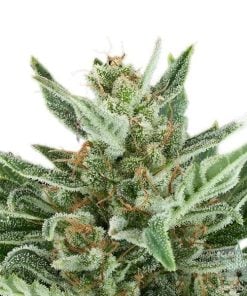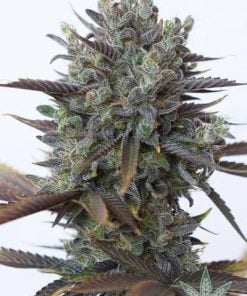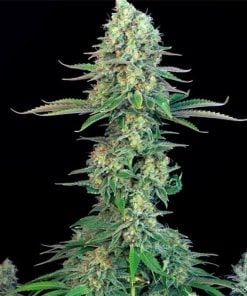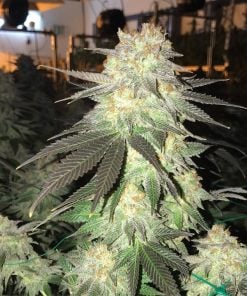Purple Haze Strain History
Purple Haze cannabis is one of the most recognizable strains in popular culture thanks to a legendary song by Jimi Hendrix that shares the same name. The origin of Purple Haze strain begins in Amsterdam during the 1960s. This super strain is a cross of Purple Thai, with Columbian Haze and an Early Dutch Skunk. Purple Haze is an 85% sativa dominant plant with powerful bag appeal and is a great conversation starter. Modern Purple Haze is more stable and produces a higher level of THC than the original version from almost sixty years ago. Purple Haze is the ultimate feel-good strain that offers mentally stimulating effects as well as a complex, old school taste.
Appearance
Purple Haze buds are medium to large-sized and maintain a spade-like shape, tapering down from a broad base to a pointed tip. True to their sativa heritage, these buds have a somewhat loose and open structure, with velvety soft and fleecy-looking leaves curling outwards from the main stem. The leaves display a mixture of mossy to bright green with deep purple hues and a coating of radiant orange hairs. The flowers are smothered in crystals, giving it a sugared appearance with a stunning bag appeal.
Purple Haze Aroma
Purple Haze has a very dank, spicy, and musky sandalwood smell. A second whiff reveals some tart, berry-tinged notes. Grinding up the buds releases a sweet floral and herbaceous aroma. Purple Haze gives off a silky smooth and easy smoke. A sweet and spicy incense aftertaste with subtle grapefruit notes leaves a lovely lingering taste on the palate.
Terpenes
The terpene content for the Purple Haze cannabis strain is around .67% beta-caryophyllene, .5% humulene, .17% myrcene, with a scattering of other terpenes such as terpinolene and guaiol. This blend of oils produces a sedative, analgesic, and anti-inflammatory effect, particularly in Purple Haze extracts.
Cannabinoids
The THC level of Purple Haze can range from 12-21%, which is standard for a Sativa. While CBD usually hangs around .1-.5%, making this an immensely beneficial strain. CBN is typically .01-.05%. In the case of overstimulation or anxiety from a high intake of THC, a dose of CBD can remedy this side effect. This Sativa dominant Purple Haze strain can reduce chronic stress, lack of appetite, depression, and provides relief and peacefulness. Many patients have found Purple Haze to be an optimal strain for daytime pain relief.
Purple Haze Strain Effects
Purple Haze induces a euphoric, happy cerebral high with a spirited and uplifted feeling. The initial high promotes chattiness, boosts creativity, and lowers stress. The trippy sativa edge of the strain may cause some psychedelic effects. Due to this, Purple Haze is not well suited for those prone to panic attacks or paranoia. Physically, this strain can ease minor inflammations like headaches or cramps. The effects of Purple Haze are very long-lasting with a gentle comedown.
Growing Purple Haze Seeds
Purple Haze plants can grow rather tall and require pruning to fit in limited indoor grow spaces. This strain grows well in northern climates, although it’s best to cultivate Purple Haze in a warmer, sunny, Mediterranean environment. The buds turn a beautiful purple color when the plant matures. Indoors this plant does well in hydroponic systems. Purple Haze grown indoors can yield an estimated 19oz/m2. The indoor flowering stage takes around 9 weeks. Purple Haze enjoys lots of sunshine. An outdoor crop is usually ready for harvest during late October, with an expected yield of about 14oz/plant.
Very beautiful plant and smells amazing! She should be ready for harvest this coming week and I’m super excited!
germinate one seed it flourished saving the others for my in door grow well worth it still got ways to go till October
Germinated one seed. Week six lookin good. No purple but it’s summer in calif not cold enough I think. Gonna try ice water when I water maybe will get it to turn purp.
Related products
Sativa Seeds
Sativa Seeds
Featured
Featured


